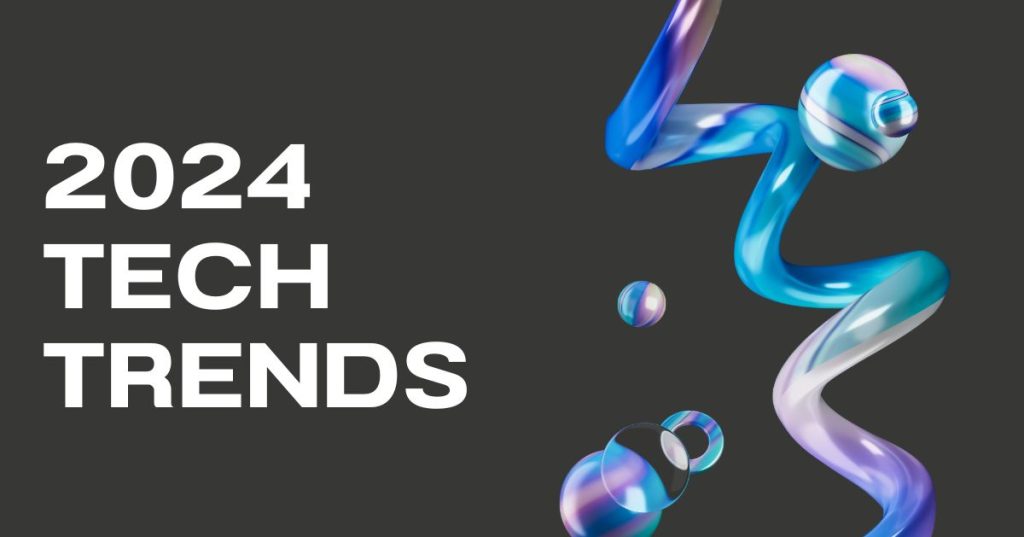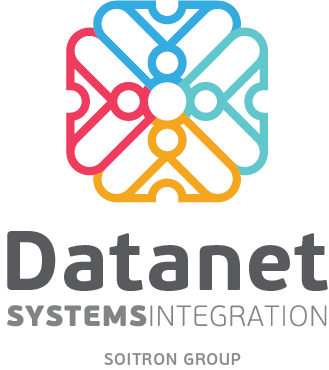As a customary practice towards the year-end, we delineate some of the most notable technological shifts. Beyond mere trends, a significant aspect of 2024 is the estimated 8% surge in global IT expenditures. According to Gartner, the most substantial spending increments will occur in software (13.8%) and IT services (10.4%), closely followed by data center systems (9.5%), devices (4.8%), and communication services (3.3%). What further underscores these developments are two ubiquitous elements: cybersecurity and Artificial Intelligence.
On a global scale, organizations are increasingly leaning on automation and cybernetic solutions to effectively address escalating demands for digitalization, heightened efficiency, remote collaboration, and the global integration of resources. Consequently, these two elements will prominently feature in the principal technological currents in 2024.

What are the most prominent technology trends in 2024?
- The Evolution of Artificial Intelligence: From Optional to Essential for Businesses
This year’s edition Cisco AI Readiness Index revealed that 95% of respondents have an AI strategy already defined or in progress, yet only 14% are fully prepared to integrate Artificial Intelligence into their business. The situation is poised to change next year. While few companies will directly work with AI technology, an increasing number will leverage applications integrating Artificial Intelligence functionalities. 2024 will witness a rise in the use of intelligent applications, defined by Gartner as applications that learn to autonomously respond to demands. These applications will be employed to automate tasks and enhance efficiency across diverse sectors, including within IT departments.
- Escalating AI-Generated Risks: Disinformation, Deception, and Fraud
In 2024, disinformation, deception, and fraud, arising from AI, will persist as a threat to both public and private organizations. In response, we will witness increased investments in solutions for detecting and mitigating risks, safeguarding against deep-fake elements (voice/image cloning), and social engineering. AI models will be trained on extensive datasets for improved precision and effectiveness. Simultaneously, the adoption of new authentication and access mechanisms will become necessary for digital resources. Companies must prioritize advanced threat detection, data protection, ongoing vulnerability assessments, security system updates, and thorough audits of IT infrastructures.
- Convergence of SASE and Zero Trust
Aligning with a shared cloud architecture centered on identity-driven access control, the convergence of Zero Trust Network Access (ZTNA) and SASE (Secure Access Service Edge) represents a strategic progression. As the Zero Trust paradigm gains momentum, its logical integration with SASE is becoming increasingly apparent. Gartner predicts that a substantial 70% of remote access sessions will be facilitated through ZTNA or SASE, a significant uptick from the current 40%. Organizations are transitioning towards unified SASE and ZTNA architectures to ensure uniform security across their entire digital perimeter. The momentum behind SASE and Zero Trust is poised to intensify in 2024, fueled by the dynamics of remote work, the shift to cloud infrastructure, and the prevalence of edge computing. Concurrently, innovative delivery models and cost-cutting measures will pave the way for broader accessibility to integrated SASE-Zero Trust services.
- AI Security Assistants
As organizations deepen their reliance on AI and automation, these systems will serve a dual purpose by fortifying cybersecurity measures in the years to come—actively detecting and preventing potential threats in real-time. Intelligent algorithms will maintain a vigilant watch over networks, identifying vulnerabilities and responding proactively to potential breaches. Furthermore, AI will play a pivotal role in ensuring compliance with data protection regulations, and automating critical processes such as consent management and data anonymization. By seamlessly integrating AI into their security infrastructure, businesses can not only safeguard sensitive information but also mount a robust defense against emerging cyber threats.
Cisco AI Assistant for Security is one of the most relevant and recent examples. Cisco’s AI Assistant will assist clients in making informed decisions, automating complex tasks, and utilizing available tools more efficiently.
- Major Advances in Quantum Cryptography
As quantum attacks pose an increasingly prevalent threat (hackers extracting encrypted data with traditional technologies, hoping to decrypt them in the future using quantum computing), we will witness the adoption of post-quantum cryptography (PQC) – even before its standardization. PQC will be embraced by browsers, operating systems, and libraries, with some providers experimenting with integrating this technology into protocols like SSL/TLS 1.3, which govern classical cryptography. From 2024, PQC technology is expected to start commercial use.
- Machine Customers, a New Element in the AI and IoT Universe
Machine Customers (also known as “custobots”) are non-human economic entities capable of autonomously negotiating and acquiring goods and services in various commercial transactions. For instance, an intelligent virtual assistant making a payment or carrying out a task on behalf of a user. This trillion-dollar market is set to explode between 2024 and 2030. Beyond commercial considerations, companies need to address strategic considerations for securing workflows that integrate these custobots.
- AI TRiSM, a New Concept for AI Risk and Security Management
AI TRiSM is a concept introduced by Gartner that defines a trust-based AI governance model, focusing on trustworthiness, fairness, reliability, robustness, effectiveness, and data protection. It is more of a set of recommendations and practices that organizations can adopt to ensure that the AI systems they use are ethical, fair, reliable, and secure. This framework includes strategies for identifying, assessing, and mitigating risks associated with AI systems. Gartner predicts that by 2026, organizations implementing AI TRiSM will experience a 50% improvement in AI adoption and the achievement of associated business goals.
- Sustainability-Focused Applications
Recognizing the pivotal role of sustainability in addressing climate change, numerous companies are poised to curtail the energy consumption of their IT systems. The year 2024 will witness a heightened interest in precisely measuring energy consumption and emissions. Automation projects for specific IT operations and widespread utilization of IoT sensors will be initiated to streamline energy use. Energy management and carbon footprint measurement are set to become increasingly paramount concerns.
- Industry Cloud platforms
Gartner’s forecast indicates that by 2027, over 70% of enterprises will leverage Industry Cloud Platforms (ICPs) to expedite their business initiatives—a substantial increase from the less than 15% observed in 2023. These platforms amalgamate SaaS, PaaS, and IaaS components into a cohesive offering tailored to specific industries. The allure of these platforms lies in their ability to deliver scalable and industry-relevant solutions for companies.
- All-in-One Collaboration Tools
Enterprises now have the opportunity to consolidate various workflows into a unified collaboration and communication solution. This trend will become notably pronounced in 2024. For instance, Webex is set to integrate no less than eight specific workflows: meetings, messaging, calls, surveys, events, webinars, video messaging, and whiteboards. Essentially, companies will oversee all facets of collaborative work on a single platform, ensuring both streamlined processes for employees and cost reductions.
In the landscape of 2024, the ongoing discussions about AI and Generative AI, joined with the persistent menace of cybercrime, will be defining features. These elements will directly propel the growing interest in specific solutions and tools, shifting them from being considered optional to becoming indispensable components that earn a top spot on the priority lists of an increasing number of companies.
To set your company apart in the market through innovation and technology, a strategic IT partner becomes a crucial partner in navigating these investments seamlessly and efficiently. At Datanet Systems, we don’t just provide the latest solutions from global leaders such as Cisco, Fortinet, Dell, F5, or Palo Alto Networks; we also deliver the professional services necessary for the smooth implementation and integration of these solutions into your IT environment. Furthermore, we ensure that the technologies adopted not only align with your business objectives but also comply with current regulations, including the NIS 2 Directive and DORA (Digital Operational Resilience Act).
For insightful discussions on innovation through technology or details about Datanet Systems’ services, don’t hesitate to contact us at sales@datanets.ro.
 Prisma SASE, an integrated security...
Prisma SASE, an integrated security...
